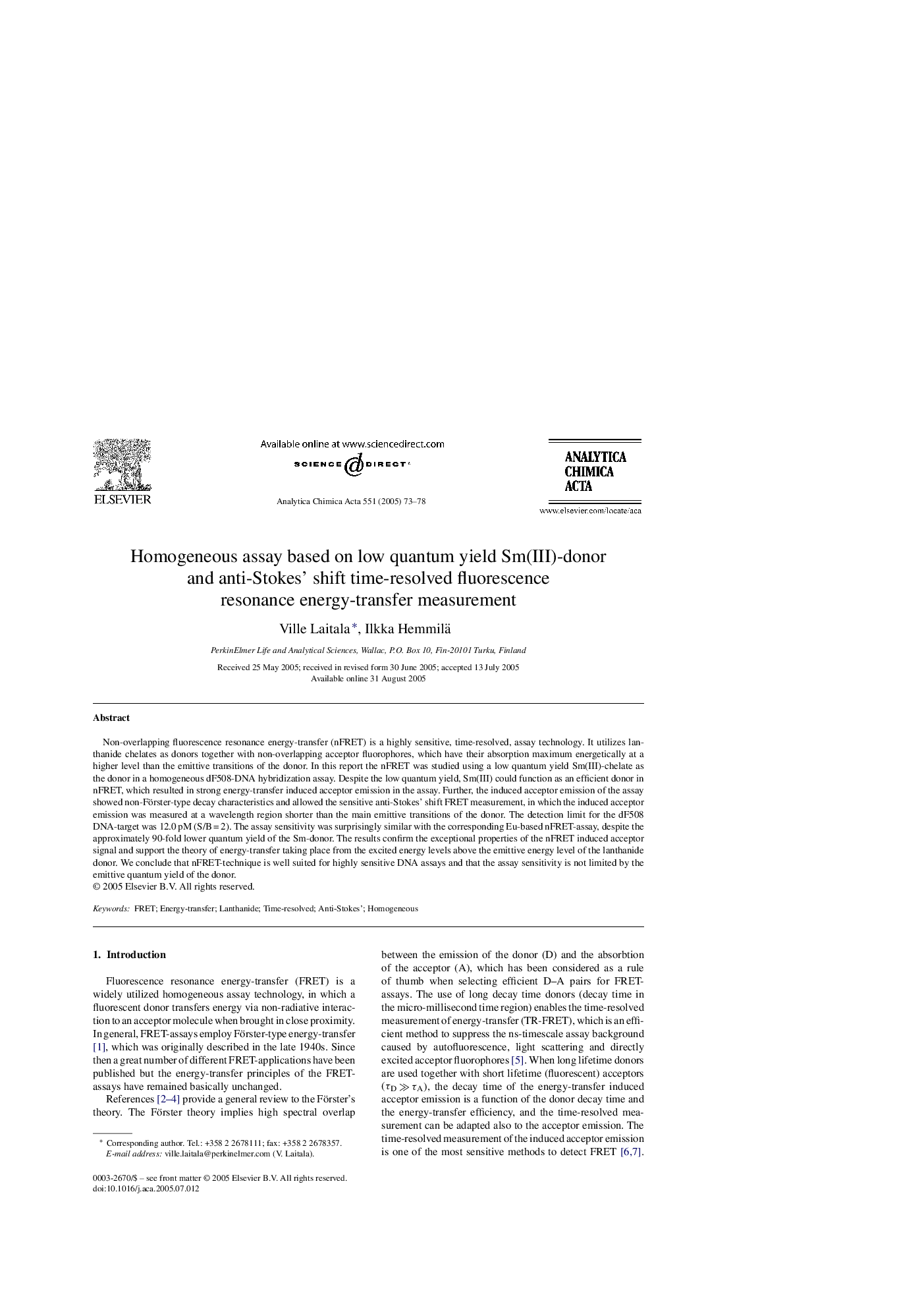| Article ID | Journal | Published Year | Pages | File Type |
|---|---|---|---|---|
| 9743392 | Analytica Chimica Acta | 2005 | 6 Pages |
Abstract
Non-overlapping fluorescence resonance energy-transfer (nFRET) is a highly sensitive, time-resolved, assay technology. It utilizes lanthanide chelates as donors together with non-overlapping acceptor fluorophores, which have their absorption maximum energetically at a higher level than the emittive transitions of the donor. In this report the nFRET was studied using a low quantum yield Sm(III)-chelate as the donor in a homogeneous dF508-DNA hybridization assay. Despite the low quantum yield, Sm(III) could function as an efficient donor in nFRET, which resulted in strong energy-transfer induced acceptor emission in the assay. Further, the induced acceptor emission of the assay showed non-Förster-type decay characteristics and allowed the sensitive anti-Stokes' shift FRET measurement, in which the induced acceptor emission was measured at a wavelength region shorter than the main emittive transitions of the donor. The detection limit for the dF508 DNA-target was 12.0Â pM (S/BÂ =Â 2). The assay sensitivity was surprisingly similar with the corresponding Eu-based nFRET-assay, despite the approximately 90-fold lower quantum yield of the Sm-donor. The results confirm the exceptional properties of the nFRET induced acceptor signal and support the theory of energy-transfer taking place from the excited energy levels above the emittive energy level of the lanthanide donor. We conclude that nFRET-technique is well suited for highly sensitive DNA assays and that the assay sensitivity is not limited by the emittive quantum yield of the donor.
Related Topics
Physical Sciences and Engineering
Chemistry
Analytical Chemistry
Authors
Ville Laitala, Ilkka Hemmilä,
